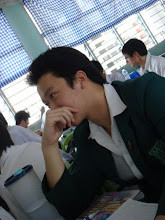
1. How does the text relate to the theme of a journey?
[The text narrates about the early childhood days of the author Roald Dahl. Majority of it recounts fascinating events that occurred throughout his life in a span of his first 20 living years. Thus, this is said to be a physical and mental journey for the author in terms of growth and self-understanding. It is also similar to the common type of journey where all children are required to experience. This is exemplified by his first-hand encounter with homesickness during whole of his first term at St. Peter’s. Besides that, Roald Dahl journeys to different places such as Llandaff (enrolled in Elmtree House and then Llandaff Cathedral School), Oslo (visited Bestemama and Bestepapa), Tjöme (vacation), Cardiff (studied in St. Peter’s School), Kent (attended classes in Repton), throughout London and East Africa (worked for the Shell Company).]
2. What is the main issue in the text?
[The main issue revolves around corporal punishment in school. In a total of 3 cases, Roald Dahl explains how students were punished in a way most feared – the dreaded cane. The first occurrence was at Llandaff Cathedral School, where he got whipped four times by the headmaster Mr. Coombes for playing a mouse prank on Mrs. Pratchett. Once again his buttocks met the cane few years later due to a misunderstanding between him and Captain Hardcastle over an issue of talking in Prep. As for the third occasion, he was informed about a boy named Michael being flogged horribly – until his backside bleeded – by the Headmaster of Repton. In addition, bullying and exploitation was also a stern matter; teachers, boazers and wardens are inclined to oppress the students. Captain Hardcastle, Williamson and the Matron are the major players in the despicable field of harassment and discrimination.]
3. What quality do you admire or dislike in a character?
[Sofie Magdalene Hesselberg, the mother of Roald Dahl, is the choice of my admiration. First of all, she was brave and independent in enduring troubled times. In exemplification, she had lost both her husband Harald Dahl and her eldest child Astri in the space of a few weeks. There she was, all alone in a foreign land and to make matters worse, she was expecting another baby in two months’ time. Instead of seeking help from relatives in Norway, she decided to continue her stay in Wales and take care of her five children. Furthermore, she was a strong-willed lady. This can be clearly seen by her determination in fulfilling her late husband’s wish. Besides that, she emphasized a lot on her children’s education and even sent Roald Dahl to well-known schools such as Llandaff Cathedral school and Repton. In addition, she was a caring and loving mother. An excellent example is that she refused to tell Roald Dahl her health condition although she knew she was going to die because the author himself was in serious condition and needed an operation on his spine. She also kept more than six hundred letters of Roald Dahl, which he wrote home to her, all neatly bound with a green tape. Another incident proved that she was willing to defend the author; when she found out the Headmaster had caned him, she settled the matter with the Headmaster immediately – promptly disallowing the caning of her son. Moreover, she incredibly dealt with all the train, boat and hotel bookings and also luggage of ten people including herself for the trip to Norway. Last but not least, she displayed decisiveness and a calm composure when the author had his nose cut off due to an accident and hurried him to the nearest doctor.]
4. How does the text develop your understanding of the world?
[In my opinion, the most eye-opening feature would be the abuse of students by teachers, prefects and wardens. Cases of mistreatment are evident throughout Roald Dahl’s life as an adolescent. This, in turn, implicates that nothing seems to be fair and the world out there is a harsh one. Additionally, the text helps me to understand the world is advancing and progressing, and has done so significantly from the author’s era. As an example, when he was operated for his adenoids to be taken out, no anesthetic was used. However, no patient nowadays would even think of visiting a doctor who doesn’t use anesthetic for adenoids operation.]




Post a Comment